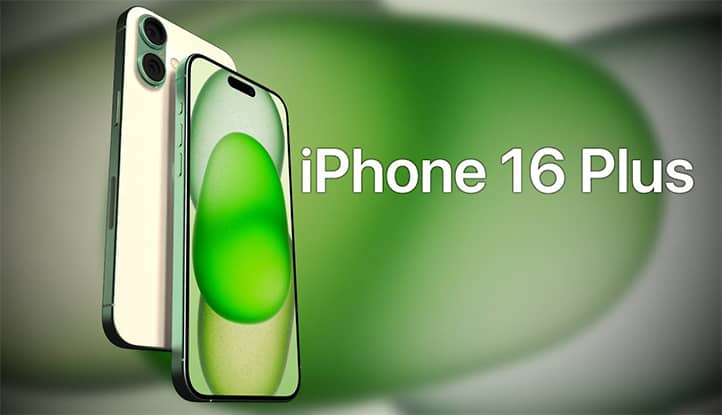Every year, the world waits with bated breath for the launch of a new iPhone. Long lines outside Apple stores, pre-orders selling out within minutes, and endless discussions on social media have become integral to the culture of digital-age consumerism. But what’s behind this phenomenon? Why are people willing to invest time, money, and emotions into acquiring a smartphone that often differs only slightly from the previous model?
In this article, we’ll dive into the psychology of anticipation and explore the complex factors that turn the release of a new iPhone into a global event. We’ll examine the historical context, psychological mechanisms, marketing strategies, and social dynamics that together create a unique atmosphere of hype around Apple products.

From Revolution to Evolution: The Journey of the iPhone
The iPhone’s story began in 2007 when Steve Jobs introduced the first model, forever changing the mobile device market. Since then, each new release has captivated millions of people worldwide.
The first iPhone models were indeed revolutionary. They introduced concepts that are now taken for granted, like the multitouch screen, the App Store, and the front-facing camera. Each innovation generated excitement and anticipation for the next technological breakthrough.
Peaks of Hype
Some iPhone releases generated particularly intense excitement:
- iPhone 4 (2010) – radical new design and Retina display
- iPhone 5 (2012) – larger screen and 4G LTE support
- iPhone 6 and 6 Plus (2014) – significant increase in screen size
- iPhone X (2017) – bezel-less design and Face ID
These models didn’t just attract attention; they created a genuine frenzy. People camped outside stores to be among the first to own the new device. Media covered these events as major news stories, and social networks were filled with photos of happy new iPhone owners.
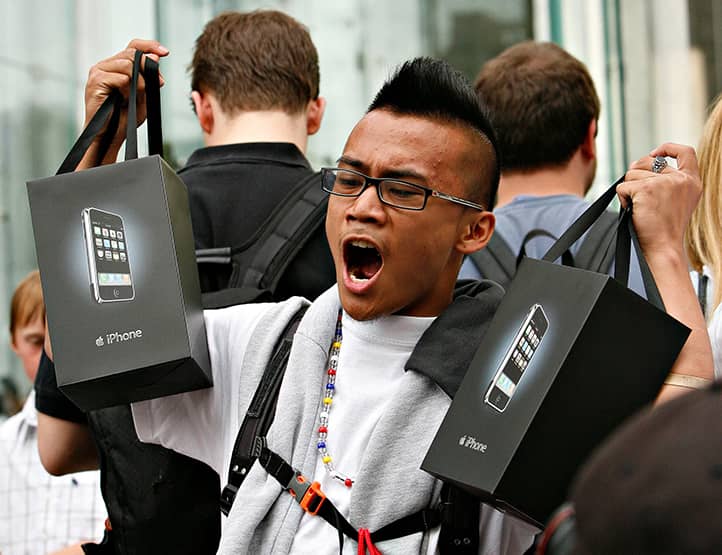
Psychological Factors Driving the Hype
The human brain is a fascinating tool, capable of turning simple desire into full-blown obsession. In the context of new tech releases like the iPhone, this ability becomes particularly pronounced, fueling the phenomenon of mass excitement.
Neurobiology plays a key role in shaping our attachment to new gadgets. The anticipation of something new activates the brain’s reward system, causing a release of dopamine—a neurotransmitter associated with pleasure and motivation. This mechanism, which evolved to encourage the search for food and other essential resources, now applies to high-tech devices.
Cognitive dissonance theory explains why people justify their desire for a new iPhone even when there’s no objective need for it. When reality (high price, minimal improvements) conflicts with desire, the brain seeks to resolve this contradiction, often by rationalizing the purchase.
Group dynamics amplify individual psychological factors. The phenomenon of groupthink can lead individuals to suppress doubts and join in on collective enthusiasm, even if they initially felt skeptical.
The Scarcity and Exclusivity Effect
One of the key factors fueling interest in new iPhones is the psychological effect of scarcity. People tend to place greater value on things that are difficult to obtain or limited in quantity. Apple expertly uses this aspect of human psychology, creating a sense of limited availability.
Pre-orders that sell out quickly and long lines at stores heighten the sense that the new iPhone is something special that not everyone can get. This drives the desire to be among the chosen few who can secure the new model first.
Social Proof and Conformity
Humans are social beings, and our behavior is often influenced by those around us. When we see that many people are eager to get the new iPhone, the social proof mechanism kicks in: “If everyone wants it, it must be valuable.”
Moreover, owning the latest iPhone is often seen as a status symbol, a way of signaling membership in a certain social group. This appeals to our need for social acceptance and approval.
The Need for Novelty and Innovation
The human brain is evolutionarily wired to seek new experiences. The iPhone, as a symbol of technological progress, satisfies this need for novelty.
Each new model promises an improved user experience, better technology, and new possibilities, which naturally attracts attention and creates the desire to own the device.
Emotional Attachment to the Brand
Apple has managed to create not just a product line but an entire ecosystem and culture around its brand. Many users feel a strong emotional attachment to Apple products, associating them with a certain lifestyle, values, and aesthetic.
This emotional connection turns purchasing a new iPhone into something more than just acquiring a gadget. For many, it’s a way to reaffirm loyalty to the brand and feel part of the “Apple family” once again.
The FOMO Effect (Fear of Missing Out)
FOMO, or the Fear of Missing Out, is a powerful psychological factor, especially in the age of social media. When everyone is discussing the new iPhone, sharing impressions, and showcasing its features, people may feel like they’re missing out on something significant.
This fear can push people to buy even when there’s no objective need for a new device. The desire to stay “in trend” and keep up with others becomes a strong motivator.
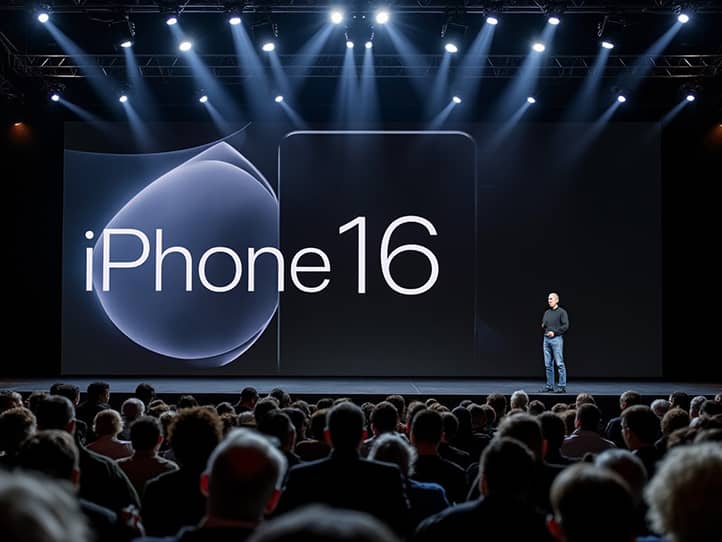
Apple’s Marketing Strategies
Apple’s marketing genius lies in the company’s ability to create not just products but entire cultural phenomena. Each new iPhone launch is not only a technological event but a kind of ritual that unites millions worldwide.
The foundation of Apple’s strategy is emotional branding, as described by Marc Gobé. The company strives to establish a deep emotional connection with consumers, appealing less to rational arguments and more to feelings and values.
The Blue Ocean Strategy, developed by Chan Kim and Renée Mauborgne, is also reflected in Apple’s approach. Rather than competing in existing market niches, the company creates new product categories where competition is minimal.
The principle of “less is more”, inspired by Dieter Rams’ design philosophy, permeates not only Apple’s products but also its marketing communications. The minimalist approach to presenting new iPhones creates a sense of purity and simplicity that resonates with modern consumers, weary of information overload.
Creating Intrigue and Mystery
Apple has turned the product release process into an art form. The company skillfully creates an air of mystery and intrigue around its new releases. Information leaks, whether accidental or intentional, fuel public interest long before the official announcement.
The company strictly controls information about new products, leading to the emergence of numerous rumors and speculations. This keeps the audience in constant suspense and anticipation, enhancing the impact of the final unveiling of the new iPhone’s features.
Limited Releases and Pre-orders
The limited-supply strategy is another key element of Apple’s marketing. The company often uses a pre-order system, creating a sense of exclusivity and urgency. When pre-orders sell out in minutes, it not only confirms the product’s popularity but also intensifies the desire among those who couldn’t place an order.
Additionally, Apple occasionally releases limited editions of its products, further amplifying the scarcity effect and the desire to own something unique.
The Role of Product Presentations and Media Coverage
Apple’s product presentations have become iconic events in the tech world. The company transforms each new iPhone announcement into a true spectacle, where every detail is meticulously planned. Charismatic presentations, impressive demonstrations of the device’s capabilities, and an atmosphere of collective excitement create a powerful emotional impact.
Media coverage of these events plays a huge role in generating hype. News about a new iPhone quickly spreads across all communication channels, becoming a central topic of discussion for days or even weeks.

The Impact of the Digital Age on Hype
The digital age has transformed not only communication methods but also the nature of consumer behavior. The phenomenon of the “digital herd instinct” describes how online trends can spread quickly and intensify, creating mass movements around products like the new iPhone.
The concept of “filter bubbles,” introduced by Eli Pariser, explains how social media algorithms can amplify interest in new iPhone models. Users who show interest in Apple begin receiving more related content, creating the illusion that “everyone is talking about the iPhone.”
The “six degrees of separation” theory, adapted for the digital world, illustrates how information about a new iPhone can reach almost every internet user within hours. This accelerates the formation of global hype around the product.
The phenomenon of “digital FOMO” (Fear of Missing Out) is intensified by constant connectivity. Being able to see real-time reactions and experiences of others who have received the new iPhone can create a strong desire to keep up with the trend.
The Role of Social Media
In the digital era, social media has become a powerful catalyst for hype around new iPhone models. Platforms like Twitter, Facebook, and Instagram provide the perfect environment for spreading information, rumors, and opinions about Apple’s latest products.
Hashtags related to the new iPhone regularly trend on social networks. Users share their expectations, discuss rumors, and debate potential features. This creates a “snowball effect,” where interest in the product grows exponentially as the release date approaches.
Additionally, social media heightens the FOMO effect. When users see posts from friends and celebrities with new iPhones, it sparks a desire to keep up by purchasing the latest model.
The Influence of Bloggers and Influencers
Bloggers and influencers play a significant role in shaping public opinion about new iPhone models. Their reviews, unboxings, and first impressions of the device heavily influence many potential consumers’ purchasing decisions.
Apple actively collaborates with popular tech bloggers, providing them with devices for review before the official release. This not only creates additional buzz around the product but also allows the company to control the narrative associated with the new iPhone.
Many users trust their favorite bloggers’ opinions more than official advertising or traditional media reviews. This makes influencer marketing a powerful tool for generating hype around new iPhone models.
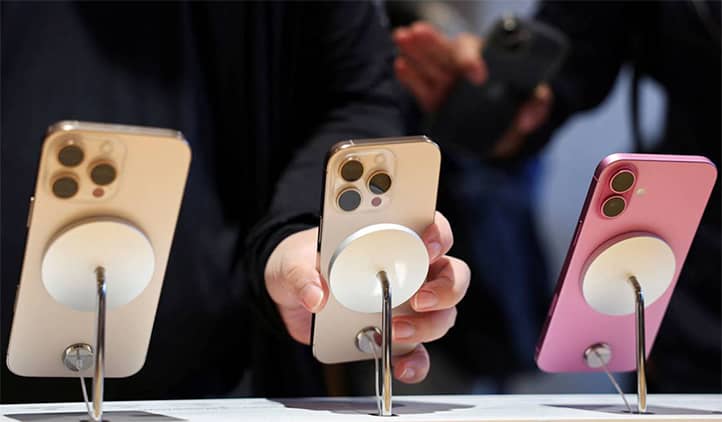
Psychological Effects of Anticipation
The psychology behind anticipating a new iPhone is a fascinating example of how modern technology interacts with ancient mechanisms of the human brain. The anticipation of a new release activates the same neural pathways as waiting for other significant life events.
The concept of a “peak experience,” described by Abraham Maslow, can be applied to the moment of receiving a new iPhone. For some users, this event becomes a source of intense positive emotion, comparable to other major life achievements.
Richard Lazarus’s cognitive appraisal theory explains why the anticipation of a new iPhone may trigger different emotional reactions in people. The perceived significance of the event and one’s resources to “overcome” it (in this case, to afford the device) determine whether anticipation is experienced as a positive challenge or a stressor.
The phenomenon of “hedonic adaptation” describes why the pleasure of a new iPhone can fade quickly, creating a need for the next model. This psychological mechanism drives a continuous cycle of waiting for and acquiring new devices.
The Pleasure of Anticipation
Psychologists note that the process of looking forward to something pleasant can be just as enjoyable—if not more—than the event itself. This is due to the brain’s reward system, which activates not only upon receiving the desired item but also during the period of anticipation.
The time between a new iPhone announcement and its actual release creates the perfect conditions for this anticipation. Users can imagine how they’ll use the new device and the possibilities it will offer, creating a positive emotional backdrop that intensifies the desire to purchase.
Possible Disappointments and Cognitive Dissonance
However, high expectations can also lead to disappointment. When the actual product doesn’t meet the mental image formed during the waiting period, the user may experience cognitive dissonance—a psychological discomfort caused by the conflict between expectations and reality.
To cope with this discomfort, people may resort to various psychological defenses: justifying the purchase, exaggerating the device’s strengths, or seeking validation from others. This often leads to even greater emotional investment in the Apple brand culture.
Impact on Self-Esteem and Social Status
For many people, owning the latest iPhone becomes a way to boost self-esteem and affirm their social status. This can be especially prominent in certain social groups where having the latest gadgets is seen as a marker of success.
However, tying self-esteem to material possessions can have negative consequences. It may lead to overspending, stress over not being able to afford a new model, or constant worry about one’s social image.
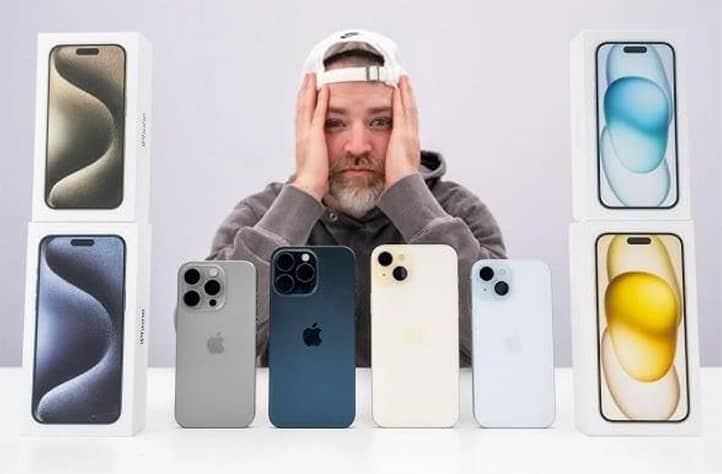
A Critical Look at the Phenomenon
The hype around new iPhone models can be seen as a microcosm of broader trends in consumer society. It reflects the tension between technological progress and sustainable development, between individual desires and collective responsibility.
The concept of the “society of the spectacle,” proposed by Guy Debord, finds a vivid expression in new iPhone presentations. These events become global media spectacles where the product is less a utilitarian object and more a symbol of a particular lifestyle and worldview.
The theory of “planned obsolescence,” first discussed in the context of the automotive industry, takes on new meaning in the era of smartphones. Critics argue that frequent iPhone updates contribute to a culture of disposable consumption that contradicts sustainability principles.
The philosophical concept of “technological determinism” raises the question of how much control we have over technology versus how much it controls us. The hype around iPhones can be seen as an example of how technological innovations shape our desires and behaviors, often without our full awareness.
Reflecting on Consumer Culture
The hype around new iPhone models is a striking example of modern consumerism. On one hand, it demonstrates the power of innovation and the ability of technology to inspire. On the other, it raises questions about whether we are becoming captives of an endless cycle of purchases.
Critics note that the constant drive to upgrade gadgets may distract people from more important aspects of life. The pursuit of the latest technology can lead to financial stress, especially considering the high cost of flagship iPhone models.
Furthermore, the phenomenon of “planned obsolescence,” where manufacturers intentionally limit device lifespans, raises ethical concerns. This not only promotes excessive consumption but also creates environmental issues.
Environmental and Ethical Aspects of Frequent Device Upgrades
Frequent smartphone upgrades have serious environmental consequences. Producing electronics requires significant resources, including rare earth metals, whose extraction often involves environmental and social challenges.
The disposal of electronic waste is also a major problem. Despite recycling efforts, a significant number of old smartphones still end up in landfills, polluting the environment with toxic substances.
Apple, aware of this issue, takes steps to make its products more environmentally friendly. The company actively works on using recycled materials, improving device energy efficiency, and enhancing recycling programs. However, critics argue that these efforts are insufficient given the scale of production and consumption.
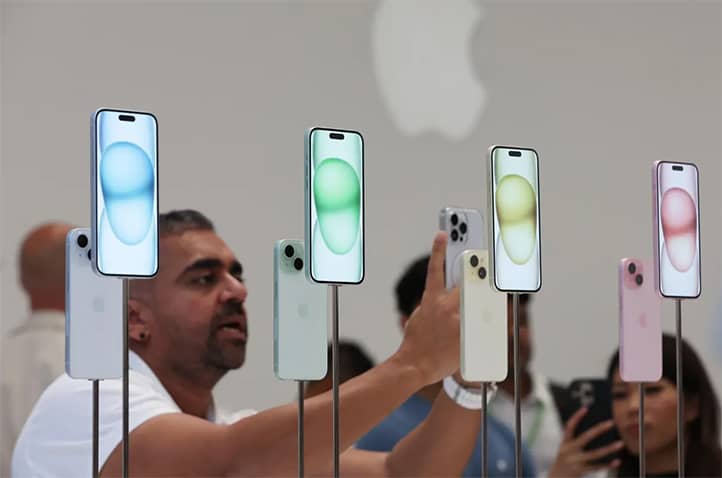
Conclusion
In summary, several key factors drive the hype around new iPhone models:
- Psychological mechanisms, such as the scarcity effect, social proof, and FOMO.
- Emotional attachment to the Apple brand and its ecosystem.
- Masterful use of marketing strategies that create intrigue and anticipation.
- The influence of the digital age, including social media and influencers.
- Cultural factors related to perceiving the iPhone as a status symbol and a marker of progress.
Reflections on the Future of the Phenomenon
The hype around new iPhones is likely to continue in the foreseeable future, though its nature may change. As smartphones become more advanced, the differences between generations of devices become less noticeable. This could lead to a reduction in the intensity of hype around each new model.
Additionally, growing awareness of environmental issues and the movement toward “conscious consumption” may influence people’s attitudes toward frequent device upgrades. We may see a shift toward longer device use, a greater interest in repairability, and upgrade options.
Apple, in turn, may adapt its strategy, placing a greater emphasis on software and services rather than just hardware upgrades. This could alter the nature of anticipation and hype, shifting focus from physical devices to digital innovations.
Personal Choice and Conscious Consumption
Ultimately, deciding whether to purchase a new iPhone is a personal choice for each consumer. It’s important for this choice to be conscious, based on real needs rather than solely emotions or social pressure.
Understanding the psychological mechanisms behind the hype around new technologies can help consumers make more balanced decisions. This doesn’t mean rejecting new devices entirely, but rather taking a more critical approach to assessing their necessity and impact on our lives and the environment.
In a world where technological advancements play an ever-greater role, it’s essential to find a balance between embracing innovations, maintaining personal autonomy, and being ecologically responsible. The iPhone phenomenon isn’t just a story about gadgets; it reflects broader trends in society, culture, and the economy. Understanding this phenomenon helps us better comprehend our place in a rapidly changing digital world and make informed choices about the role of technology in our lives.
